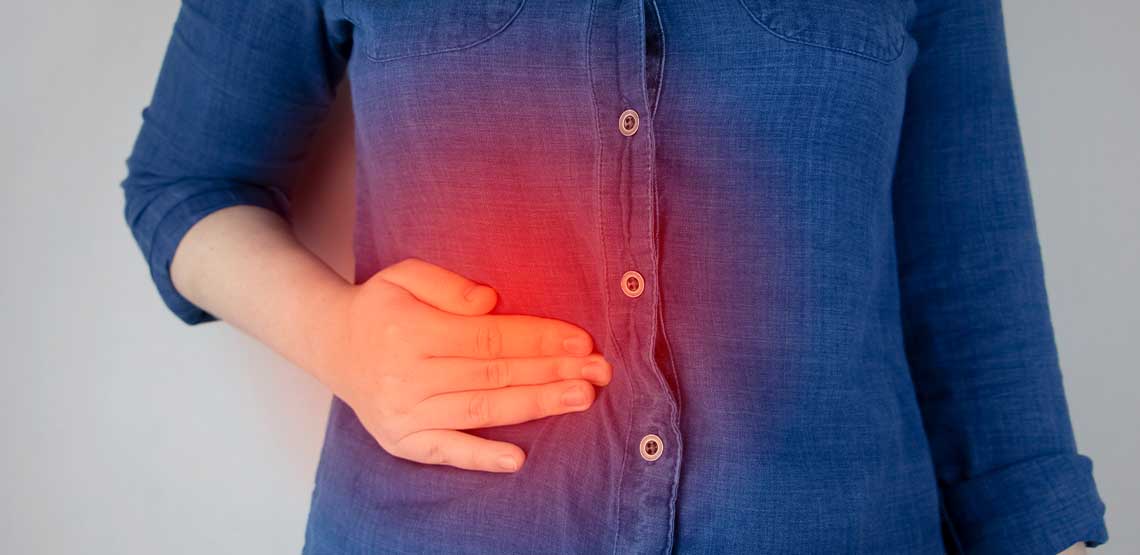What Are the Signs of Pancreatitis?
The pancreas is located near the stomach, in the upper left area of the abdomen. It lies horizontally and is about 6 to 8 inches long. Despite its small size, the pancreas plays an essential role in converting the food we consume into energy the body can use. When the pancreas becomes infected or inflamed, it affects our body in a variety of ways, and it is known as pancreatitis. So, what are signs of pancreatitis and what causes it? Let’s find out.
What Does the Pancreas Do?
The pancreas is a vital part of the digestive system, doing its job in two significant ways.
The pancreas releases two essential hormones: insulin and glucagon. It directly sends them into the bloodstream. Insulin lowers blood sugar and glucagon raises blood sugar. Sufficient blood sugar levels allow organs like the kidneys, liver, and brain to function appropriately.
The pancreas also produces various enzymes that it releases into the partially digested food from the stomach into the small intestine. Among these enzymes is amylase to digest carbohydrates, trypsin for proteins, and lipase to dissolve fats. These pancreatic enzymes combine with liquids from the gallbladder and liver to breakdown food for the body.
What is Pancreatitis?
If the pancreatic enzymes get released into the pancreas instead of into the digested food, the pancreas can become inflamed, leading to pancreatitis. Pancreatitis may occur as one of two types: acute pancreatitis or chronic pancreatitis.
Acute Pancreatitis
Acute pancreatitis starts suddenly and lasts for short periods, only lasting a few days or more. Most people with this type of pancreatitis improve quickly with treatment. Though rare, some cases of acute pancreatitis may require longer stays in the hospital to recover.
Chronic Pancreatitis
Unlike acute pancreatitis, chronic pancreatitis typically occurs over a more extended time, slowly worsening. Chronic pancreatitis may injure the digestive system permanently, leading to digestive problems and blood sugar issues. Most people who develop pancreatitis are men between the ages of 30 to 40.
Causes of Pancreatitis
Both acute and chronic pancreatitis have a few common causes:
- Heavy alcohol consumption
- Gallstones
- Medication
- Family history or genetic disorders
- Abdominal injuries
- Pancreatic cancer
Gallstones are most often the cause of acute pancreatitis. Gallstones can inflame the pancreas temporarily as they pass through the pancreatic duct. Chronic pancreatitis, on the other hand, has several possible causes. Heavy alcohol use, high lipid (fat) levels, and elevated calcium levels can all lead to acute pancreatitis.
Signs and Symptoms
For both types of pancreatitis, the most common symptom is pain in the upper abdominal area that spreads towards the back of the body. People who have chronic pancreatitis also experience pain and may have other symptoms.
Related Search Topics (Ads)
Acute Pancreatitis Symptoms
The pain which accompanies pancreatitis typically begins slowly, though, for some people, it can start suddenly. Pain can last for several days and may include fever, nausea, vomiting, and a tender abdomen.
Chronic Pancreatitis Symptoms
Chronic pancreatitis may feel the same way as acute pancreatitis but last much longer. After eating a meal, chronic pancreatitis symptoms such as pain, nausea, and vomiting may worsen. Other symptoms can include greasy stools, weight loss, and diarrhea.
Diagnostic Process
Diagnosing pancreatitis involves blood tests and scans. These methods evaluate the extent of inflammation or infection and find a cause. Blood and stool tests check for elevated pancreatic enzymes and nutrient levels. Ultrasounds, including abdominal and endoscopic, help spot gallstones and locate the exact areas of inflammation. CT scans and magnetic resonance imaging (MRI) look for gallstones, inflammation, and abnormalities in and around the pancreas.
Treatment Options
The treatments for pancreatitis depend on the cause and the extent of injury to the area. A few treatments for pancreatitis include:
- Fasting to provide the pancreas time to recover from inflammation
- Pain medications to manage discomfort
- Intravenous fluids to treat dehydration and nutritional deficiencies
- Removal of any duct obstructions that may be the cause of pancreatitis
- Gallbladder surgery to remove and prevent future gallstones
- Surgery for the pancreas to remove diseased tissue or drain fluids
- Medications to replace lost enzymes to improve digestion
- Treatment for alcohol dependence if alcohol use is a contributing factor to pancreatitis
Can It Be Prevented?
Once 90% of the pancreas no longer functions, malnutrition, weight loss, and diarrhea start to occur. Therefore, people need to maintain the health of their pancreas. In cases where pancreatitis is the result of a genetic disorder, preventing pancreatitis is not feasible. However, in most situations, preventing pancreatitis is possible through the following measures:
- Avoid alcohol or reduce the intake of alcohol. In the case of alcohol dependence, seek treatment.
- Eat a varied diet low in fats and high in fruits and vegetables. Fatty foods, especially meats, can contribute to pancreatitis.
- Maintain a healthy weight
- Take medications as directed
- Avoid injuries to the abdominal area
- Increase physical activity
To monitor your pancreatic health, maintain regular check-ups and wellness appointments with your physician. See a physician right away if you experience pancreatitis symptoms, especially if you feel significant pain.

